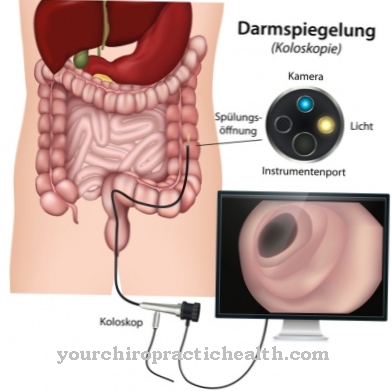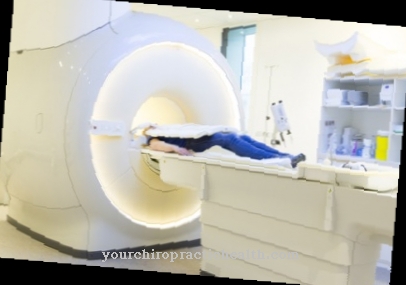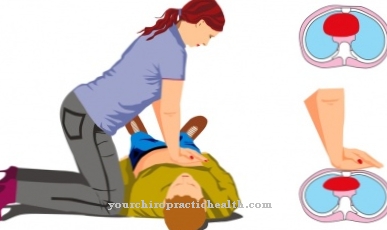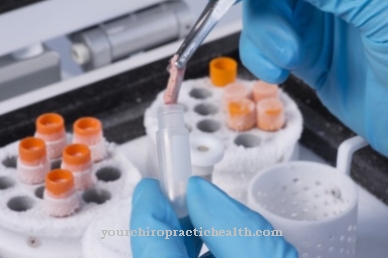The Hand surgery has established itself as a separate specialty of medicine. The anatomy of our hand is very complex and with it various clinical pictures have come into focus. How is the correct diagnosis made and what diseases are there?
What is hand surgery?

Hand surgery is the treatment of diseases and injuries to the hand and forearm. Modern hand surgery was founded by the American Sterling Bunnel after the Second World War. Hand surgery has been an additional field since 1993 and can be acquired by specialists in orthopedics, surgeons and plastic surgeons.
The main feature of hand surgery depends on the acute and chronic damage or injuries to the upper extremity or hand. The upper extremity encompasses the entire arm: shoulder, upper arm, forearm, and the hand.
The hand is again divided into individual parts: the wrist, the metacarpus and the fingers. The aim is to provide an indication, that is, to determine whether there is a reason for using a therapeutic or diagnostic measure. It also includes the prevention, detection and treatment of diseases, malformations and tumors of the hand. Reconstruction after injuries and illnesses is also part of the field of hand surgery.
Treatments & therapies
The clinical pictures of our hand are very complex and so are the treatment of the individual diseases. Injuries to the finger bones, tendons (connective tissue part of the muscle) and ligaments are treated most often. A fracture of the wrist, for example that of the wrist, the ulnar-spoke joint, or the forearm, is a common injury. In the event of a break, the affected area is splinted or plastered.
These injuries can be corrected with conservative therapy; surgical intervention is only necessary for complicated fractures. If blood vessels or nerves are injured as well, an operation cannot be ruled out. Caring for the patient with burns to the upper extremities is also part of hand surgery.
The treatment of chronic diseases of the joints has taken on a very important task. Osteoarthritis, the wear and tear on the joints, is damage to the joint cartilage. Primary osteoarthritis mainly affects women after the menopause and the cause of the damage is unknown. It stands to reason that changes in the hormonal balance play a major role.
Secondary osteoarthritis is the result of metabolic disorders and crystal deposits (gout) or arthritis (an inflammatory disease of the joints). Osteoporosis (bone loss) can also lead to secondary osteoarthritis. Overstressing the joints or a lack of exercise can promote osteoarthritis. Rheumatoid arthritis begins with pain in the little fingers and wrist. Other joints in the human body can also be affected.
Carpal tunnel syndrome is one of the most well-known compression syndromes. It is a compression syndrome of the median arm nerve in the wrist area. The pain or abnormal sensation occurs in the hand and can radiate into the entire arm. The symptoms become increasingly acute and can lead to muscle wasting in the area of the ball of the thumb. Weakness in grasping and a reduced sense of touch are side effects. The mild form of carpal tunnel syndrome can be treated without surgical therapy.
Treatment areas in hand surgery also include infections of the soft tissue (tendinitis) and the bone, as well as diseases of tumors and cyst formations on the hand and arm and congenital malformations. The treatment also includes children with malformations in children, rheumatics and the care of patients with prostheses and the rehabilitation of patients with hand injuries.
You can find your medication here
➔ Medicines for painDiagnosis & examination methods
In order to be able to make a conscientious diagnosis, an X-ray examination is arranged for the initial anamnesis. The anatomy of the hand is shown in detail on an X-ray.
Projection images are created in two planes and are used for the recognition and therapeutic assessment of the course of inflammatory, traumatic, degenerative and tumorous diseases of the bones and joints of the hand. In order to fully clarify a possible disease, a CT is arranged after an X-ray. In computer tomography, disc images are created with the help of X-rays. The X-ray and CT images are assessed by a specialist in radiology.
To confirm a more accurate diagnosis or rule out a disease, an MRI is done. Magnetic resonance imaging makes it possible to diagnose rheumatic diseases or to assess the course. Joint inflammations and tendinitis are shown directly. Before the MRI, the patient drinks a contrast agent that allows the visualization of inflammatory joints and tendons.
The form of therapy initiated by the attending physician varies depending on the diagnosis.A complex and consistent follow-up treatment is necessary after an operation on the hand. The greatest advances are made with occupational therapy. Physiotherapy can be prescribed for support.
Physiotherapy is prescribed for diseases such as osteoarthritis. To reduce the pain, anti-inflammatory pain relievers such as diclofenac or ibuprofen are taken. To prevent stomach and liver diseases, the natural medicinal herb devil's claw can also be administered to relieve pain. Injections into the joints is a therapeutic option, but it can also lead to side effects. If none of the therapies work, surgery can be a solution.
After every hand injury and operation, it is important to relieve the pain and train the movement and restore it completely. A therapy plan is developed individually for each patient. The attending physician and the hand therapist are always in close contact so that they can better assess the healing process.












.jpg)



.jpg)










.jpg)
